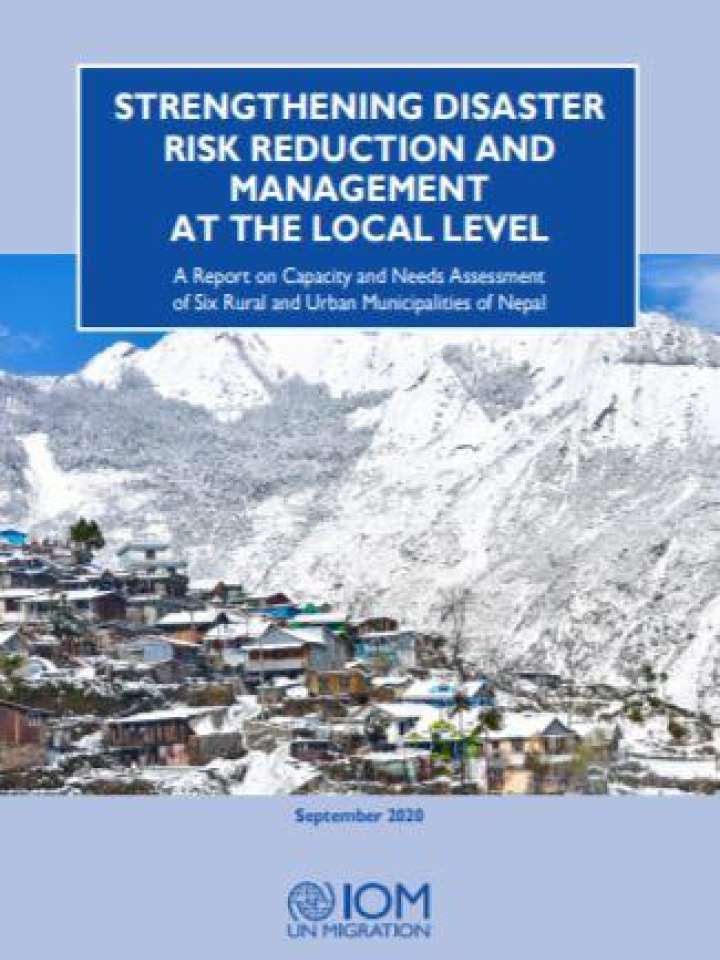Strengthening disaster risk reduction and management at the local level: A report on capacity and needs assessment of six rural and urban municipalities of Nepal
This needs and capacity assessment, carried out in six local levels (one metropolitan city, four municipalities and one rural municipality), is expected to shed some light on what policies and capacities currently exist at the local level for prevention (risk reduction and mitigation), preparedness and response (search and rescue, relief, recovery, reconstruction, rehabilitation), and in minimizing the impact of disasters (mainstreaming inclusive disaster risk management processes and priorities in development activities). This assessment also records the DRRM initiatives carried out by these local bodies with regard to DRRM in their areas. Among these, one municipality (Gorkha) is in Gandaki Province and the rest (Lalitpur Metropolitan City, Shankharapur Municipality, Changunarayan Municipality, Chautara-Sangachowkgadhi Municipality and Gosaikunda Rural Municipality) are located in Bagmati Province. These local levels were purposely selected to study the situation in the 2015 earthquake-affected areas and to represent the spectrum from metropolitan city to rural municipality, representing widely varying financial, technical, information and human resource capacities.
The assessment has two objectives:
- Firstly, to generate the baseline information on the strength, needs and capacity gaps of the selected local levels, namely Lalitpur Metropolitan City, Chautara-Sangachowkgadhi Municipality, Shankharapur Municipality, Changunarayan Municipality, Gorkha Municipality and Gosaikunda Rural Municipality, in DRRM. This information will be used by the “People to People Support for Building Community Resilience through Recovery and Reconstruction in Nepal” (P2P) project for designing and refining its project activities to enhance the DRRM capacity of these selected local levels.
- The second and broader purpose of this assessment is to develop recommendations and contribute to the training package on enhancing the capacity of local levels for effective DRR, preparedness and response management.
In order to achieve these objectives, the assessment specifically explores how much the selected six local levels know about the following institutional structures and mechanisms for DRRM and how able they are in making these work:
- DRRM governance at the national level: DRRM Act 2017, Disaster Risk Reduction (DRR) National Strategic Plan of Action (2018–2030) and institutions in Nepal;
- DRRM governance at the local level: Local DRRM Act, Disaster Management Fund Mobilization Guidelines and DRRM plans;
- DRRM institutional framework at the local level;
- Linkages with DRRM institutions at the district, provincial and federal levels;
- Preparedness capacity of local levels;
- Response capacity of local levels;
- Mainstreaming DRR and ensuring inclusion in DRRM;
- Disaster risk-sharing, financing and transfer;
- Inter-local level cooperation for effective DRRM.
The information from all six local levels were consolidated, analysed and the findings of the assessment are presented under the above headings with recommendations for future capacity-building initiatives. This assessment is presented to the Ministry of Federal Affairs and General Administration (MoFAGA) for review comments and endorsement. The study, being qualitative and based on limited number of key informant interviews, presents a broad overview on capacity gaps in DRRM and should not be generalized for all local levels. Moreover, the study might have missed more recent updates on DRRM initiatives undertaken by the municipalities as the baseline survey was conducted during the third quarter of 2019.
Explore further
